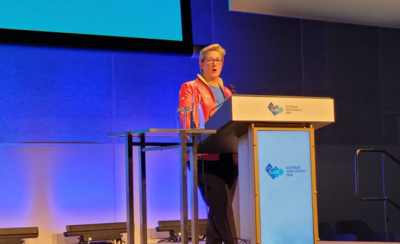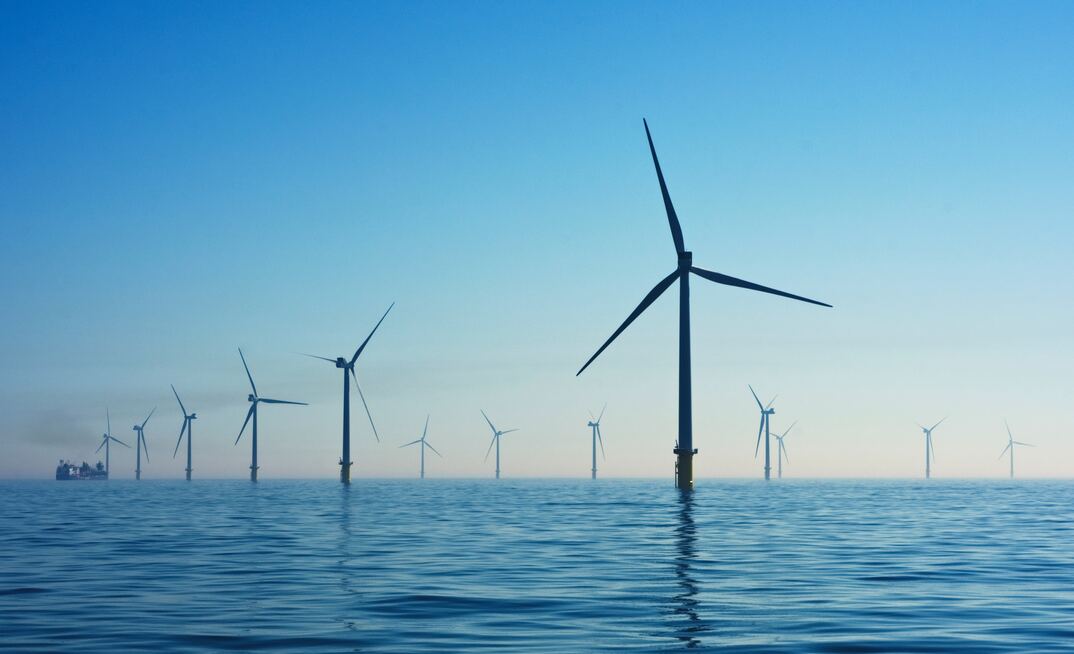Offshore wind power is being touted by Australia's federal government as one of the ways they'll ensure the lights stay on and emissions targets are met as coal fired power stations are taken offline.
Consequently, the sector is growing rapidly, as was shown at the recent Australia Wind Energy 2024 exhibition and conference held in Melbourne, which - while by no means solely devoted to offshore developments - was a clear illustration of the interest in this new sector.
But where is Australia in the race to tap into the power of its considerable southern winds?
Over the last few months, announcements have periodically come out from the Federal Government about a new area of the sea ripe for development or having been approved as being ripe for development. Or indeed a consultation to test and judge that all important ripeness.
YOU MIGHT ALSO LIKE

But precious little's happening in the water itself, which begs the question - in this complicated regulatory, governmental and industry eco-system - where is Australia's offshore wind sector?
The background
Be under no illusion, it's still a good few years until any wind turbines will be installed in Australian waters, but that's not to say nothing is happening.
The government – understandably – has taken a pragmatic and measured approach to the development of this newly emerging energy sector, but that of course means time. And of course according to the climate experts, that's a luxury Australia and indeed the world can ill afford.
In 2021 the Offshore Electricity Infrastructure Act established the overall licensing scheme to enable the sector's construction, operation and (notably) decommissioning.
Under the Act's framework, there are three central tenets:
- the Minister for Energy makes all the licensing decisions, including declaring suitable areas both at a commercial scale and for research and development of new and emerging technologies.
- the Offshore Infrastructure Registrar (a function of the National Offshore Petroleum Titles Agency, NOPTA) is responsible for administering the licensing scheme, including assessing licence applications and making recommendations to the minister.
- prior to starting any offshore infrastructure work, a licence holder is must have its management plan (containing details about the operational aspects of a project) approved by the Offshore Infrastructure Regulator (the OIR, a function of the National Offshore Petroleum Safety and Environmental Management Agency (NOPSEMA)).
In simple terms, the federal government will suggest a potential area of the sea for wind power usage, a consultation will be carried and feedback obtained. Based on this, the energy minister may declare that sea area as suitable for development and will invite applications for a feasibility license from industry. .
After due consideration, a feasibility license may be granted to one or more proponents who then have up to seven years to investigate the area and development their plans.
After this, a license holder wishing to proceed to commericalisation must have their comprehensive management plans approved by the OIR.
Once done, a 40 year commercial license can be granted and the license holder can start construction.
Are you keeping up at the back?
Support from the corridors of power
Energy minister Chris Bowen is clearly a fan (no pun intended).

When he announced the six regions for consideration in 2022 he said: "The world's climate emergency is Australia's regional jobs opportunity and offshore wind is just one example.
"Unlocking the offshore wind industry is an exciting new chapter for Australia and we want to build a platform of community collaboration and support around it.
"We have some of the best wind resources in the world - just one rotation of one offshore wind turbine provides as much energy as an average rooftop solar installation generates in one day.
"This new industry will provide opportunities to reduce emissions and fast track job and economic development opportunities for regional Australia particularly in clean energy generation and manufacturing.
"Many other countries have been successfully harvesting offshore wind energy for years, and now is the time for Australia to start the journey to firmly establish this reliable and significant form of renewable energy."
Unlocking the offshore wind industry is an exciting new chapter for Australia and we want to build a platform of community collaboration and support around it.
How long until Australia starts to harness its wind?
In August 2022 the energy minister formally identified six priority areas in Australia for offshore wind. To date, five of that six have been formally declared and (as of August 2024) consideration continues for last one off the coast of Tasmania.
So far only two areas – Gippsland and Hunter – have had feasibility licenses granted to allow further development of the possible wind farms.
In other words, there's not going to be any changes for a fair while yet.
You can see an interactive version of Australia's offshore wind zones here.
Gippsland
More than 35 applications were submitted for a feasibility license off the Gippsland coast. After a consultation period, 12 projects have received feasibility licenses:
- High Sea Wind Pty Ltd
- Gippsland Skies Pty Ltd
- Blue Mackerel North Pty Ltd
- Kut-Wut Brataualung Pty Ltd
- Ørsted Offshore Australia 1 Pty Ltd (Gippsland 01)
- Star of the South Wind Farm Pty Ltd (SOTS)
- Iberdrola Australia OW 2 Pty Ltd (Aurora Green)
- Greater Gippsland 2 OWP Project Pty Ltd (Gippsland Dawn)
- Navigator North Project Pty Ltd
- Ørsted Offshore Australia 1 Pty Ltd (Gippsland 02)
- Kent Offshore Wind Pty Ltd
- Great Eastern Offshore Wind Farm Project Co Pty Ltd
Hunter
Feasibility licence applications were accepted for proposed projects within Hunter declared area from 8 August 2023 to 14 November 2023.
A total of eight applications were received for feasibility licences, with just Novocastrian Wind Pty Ltd progressing to be granted the license.
If so slow, why bother?
As the world moves towards more sustainable and renewable energy sources, many experts and indeed the Australian government see offshore wind as a promising solution.
Undoubtedly offshore wind power can contribute to reliable, high-capacity energy, and be part of the mix to help Australia reach its target of net zero emissions by 2050.
A single offshore wind turbine can provide up to 66 gigawatt hours of energy per year, enough to power 10,000 Australian households for a whole year. At best, a single turbine rotation, could power a typical home for 24 hours.
Advocates also say a new offshore wind industry can present an opportunity to boost Australian supply chains, local economies and job prospects.























